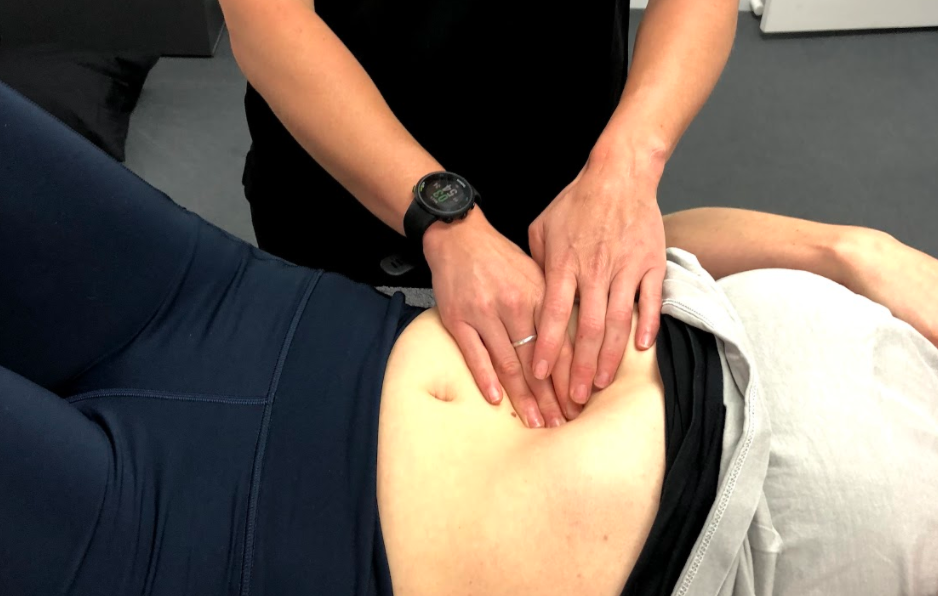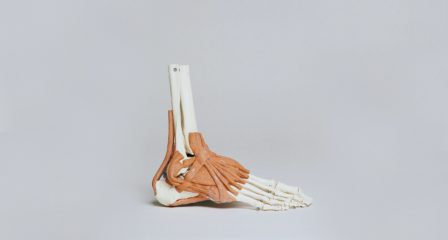At The Injury Clinic, practitioners are frequently asked about abdominal separation by post partum women. We decided to write this blog to dispel some myths and misconceptions about diastasis rectus abdominis.
DIASTASIS RECTUS ABDOMINIS – WHAT IS IT?
The rectus abdominis are a pair of muscles that run from the ribcage to the pelvis; the ‘six pack’ muscles. These muscles are joined through the middle by the linea alba, a grouping of collagen fibres that assist in the transfer of forces between the muscles. Together, the rectus abdominis and linea alba assist many other trunk muscles in transferring force and providing trunk support. During pregnancy (and some other cases), the linea alba is stretched as the baby grows. When this distance exceeds normal values, it is considered a diastasis rectus abdominis.
DIASTASIS RECTUS ABDOMINIS – THE FACTS…
- By definition, a diastasis rectus abdominis is stretching of the linea alba. It is deemed significant if it is greater than 2.2cm wide when measured on ultrasound.
- Diastasis rectus abdominis is extremely common in pregnancy, with approximately
- 33.1% of women at 21 weeks gestation,
- 60% of women at 6 weeks post partum,
- 45.5% of women at 6 months post partum, and
- 32.6% of women at 12months post partum having a diastasis rectus abdominis.
- The current research shows there is no causative link between diastasis rectus abdominis and lumbopelvic pain.
- There doesn’t seem to be any significant risk factors for developing a diastasis rectus abdominis. Researchers have looked into the possibility of age, height, number of pregnancies, multiple pregnancies (ie. twins, triplets or more), heavy lifting and many other possible factors and have not found a causative link.
- When women at 6months post partum are compared to women without children, there is a significant difference in the width of the linea alba.
WHAT DOES THIS ALL MEAN?
In short, this means the majority of women who carry a child will experience a diastasis rectus abdominis and not all linea alba will return to a ‘normal’ width. For many, the idea that this may lead to the development of an irreversible ‘mum tum’ can be devastating. At The Injury Clinic, we feel that with the appropriate care, a desired outcome can be achieved.
SO, HOW DOES A DIASTASIS RECTUS ABDOMINIS GET ‘FIXED’
-
Natural recovery
- It is postulated that little natural recovery will occur after 8weeks post partum.
- This does not mean dire outcomes for those who still have widening of the linea alba after 8 weeks post partum, it merely means they haven’t had as much natural recovery. There are still other ways those with diastasis rectus abdominis can achieve normal function.
-
Post Partum Abdominal Support
- This is the use of a belt or compression garment to help physically narrow the linea alba. There is no evidence to show this works.
-
Physiotherapy
- There is conflicting evidence on the effectiveness of exercises to improve the function of the abdominal wall.
-
Surgery
- The surgical option is essentially a tummy tuck and is considered a cosmetic surgery. A surgeon can stitch the two muscle bellies in closer proximity and remove any excess skin (if needed/appropriate).
- It is important to note that this will not improve the function of the muscles but will improve the appearance of the abdomen.
- This means that even with surgery, it is important that women work on achieving effective muscle activation and contraction to ensure efficient muscle function. This is important to ensure normal daily activities can be achieved with minimal or no negative consequences.
AT THE INJURY CLINIC, WE BELIEVE…
- If all the abdominal muscles (rectus abdominis, obliques and transverse abdominis) are appropriately retrained, the abdominal wall will be able to function normally.
-
- Emphasis should be placed on achieving normal muscle function rather than achieving a desired look.
- When normal muscle function is achieved, it is likely the abdominal wall will resume a more ‘desired’ appearance.
- There is every chance that the linea alba will remain wider than it was pre-pregnancy.
-
- This does not mean there will be permanent negative consequences.
- Evidence has demonstrated the abdominal wall can function effectively with a linea alba that is wider than it was previously.
- To achieve the best possible outcome, an individualised assessment and management plan should be designed.
-
- An assessment should be completed by a Physiotherapist and this can be done anytime from 6-8 weeks postpartum onwards.
- It is extremely difficult to achieve good quality muscle activation of the abdominals in the post partum period. Activating the muscles incorrectly can lead to increased pressure on the abdominal wall (which can make the diastasis rectus abdominis worse) or the pelvic floor (which increases the risk of urinary incontinence, pelvic organ prolapse and other conditions associated with pelvic floor dysfunction). For this reason, Physiotherapists at The Injury Clinic feel it is vital to have a one on one consultation to ensure abdominal muscle activation is both effective and efficient.
IN SUMMARY…
Physiotherapists at The Injury Clinic feel that while a diastasis rectus abdominis can be permanent, it doesn’t necessarily mean women have to live with a poorly functioning abdominal wall. Appropriate assessment and good exercise prescription can enable excellent muscle function which in turn improves the abdominal appearance. For more information, please contact the Physiotherapists at The Injury Clinic on (03) 5229 3911 or info@theinjuryclinic.com.au.



